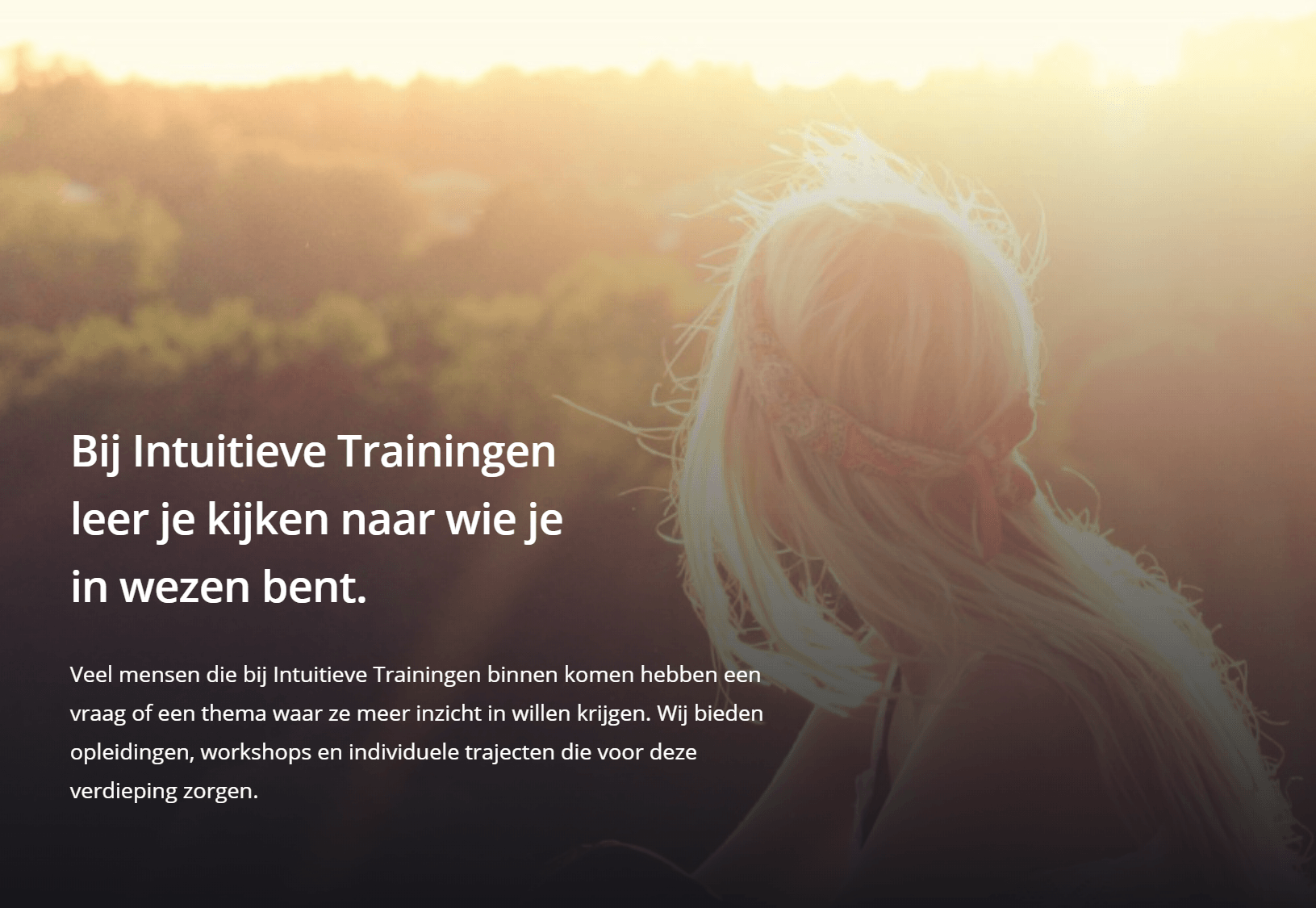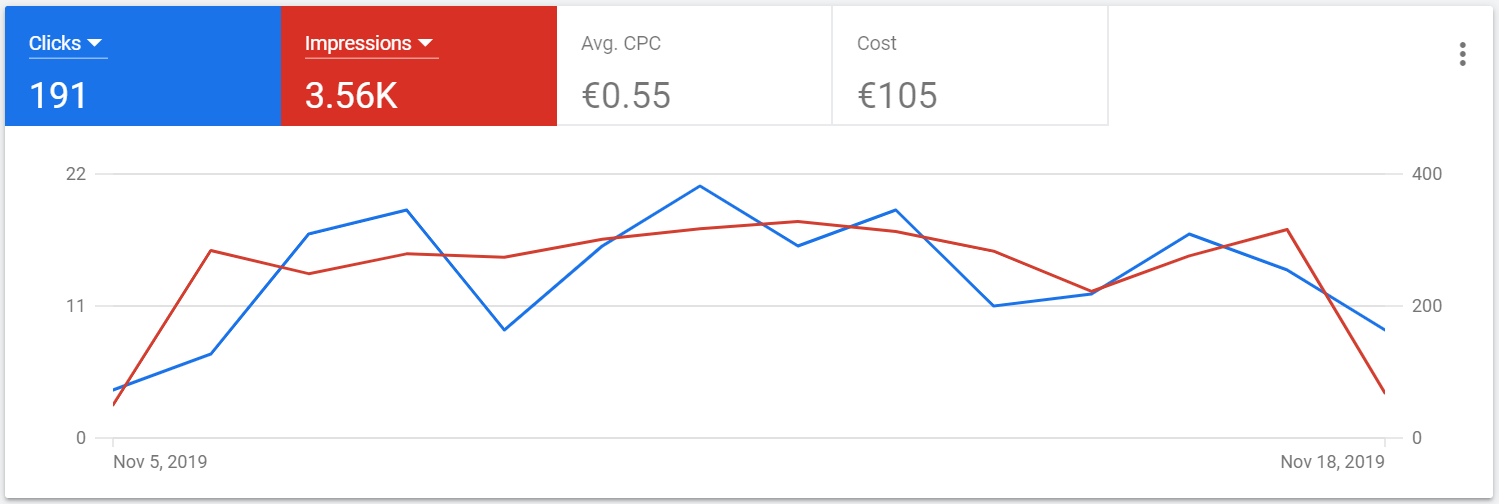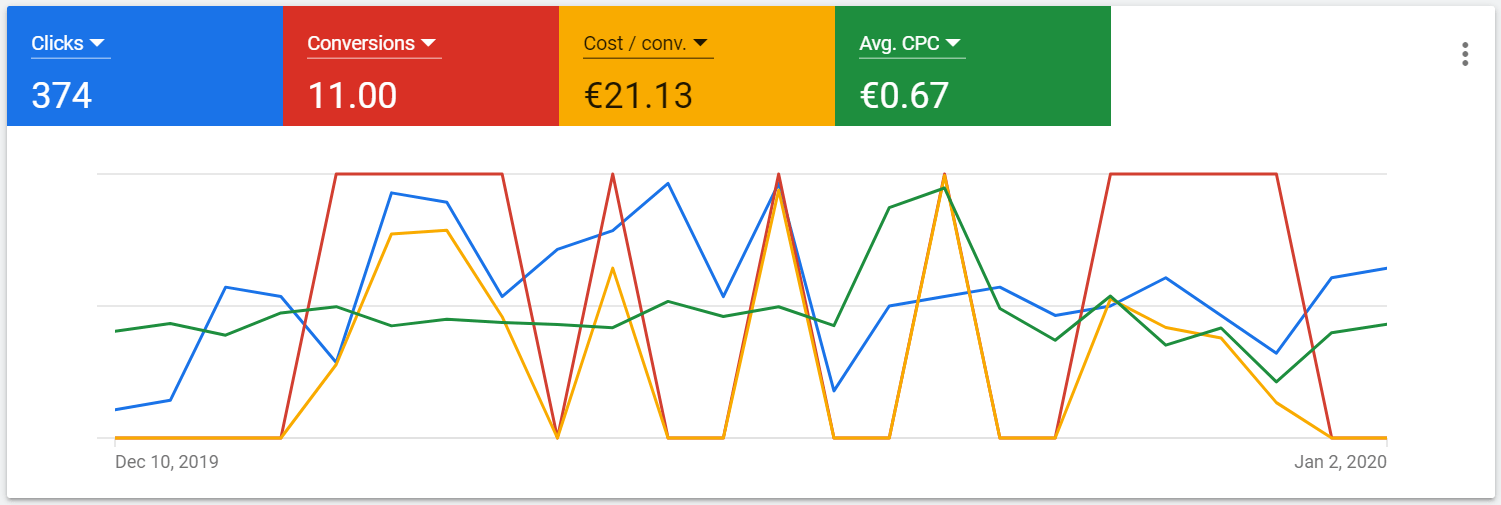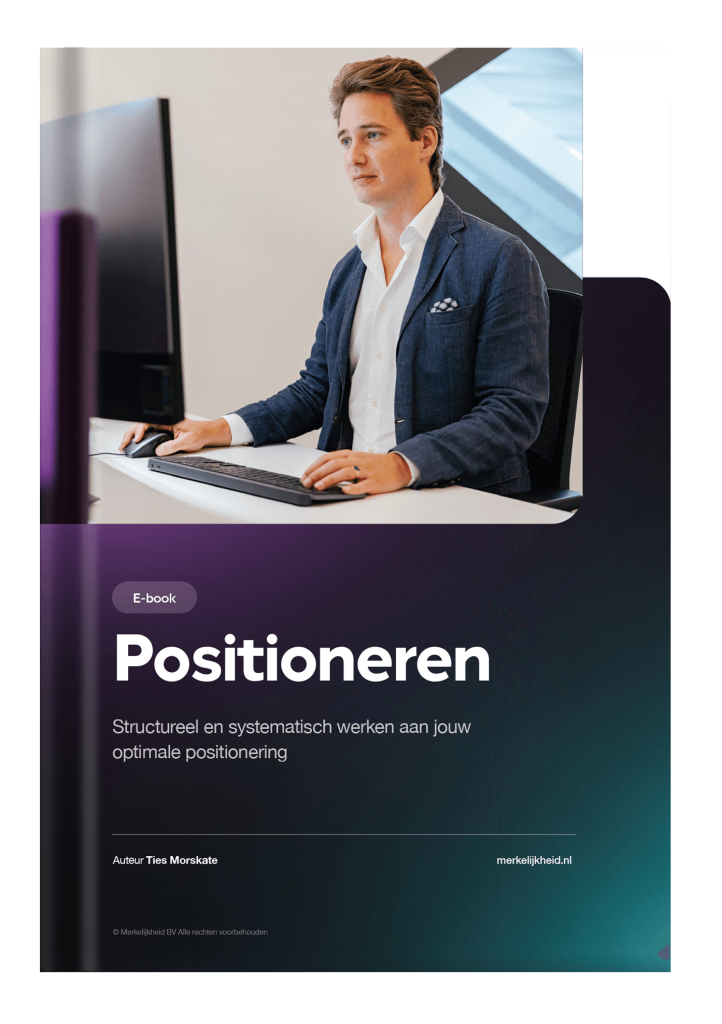Online Marketing: Lead generation campaign with a limited budget

First and foremost, I would like to thank Intuitive Trainingen for the opportunity to delve so deeply into an online marketing campaign. Typically, this information is strictly confidential, and clients are not eager to allow us to detail how their campaign was successful.
We started in a very hands-on way and learned as we went about what works for this company and its offerings. This resulted in an effective allocation of time by Merkelijkheid, allowing us to quickly respond to the initial results. As a result, we were able to identify clear improvement steps in the various campaigns. We’re excited to take you through the course of our collaboration.
Why a lead generation campaign?
Intuitive Training (IT) is an educational center for intuitive, spiritual, and personal development located in Zutphen. IT offers complete training programs, workshops on various topics, and customized individual trajectories. There was limited room for growth within the current target audience, and awareness outside of it was low. How can we find more potential students with a limited budget?
Through a highly targeted lead generation campaign via Google Ads/SEA, it’s possible to reach the right audience at relatively low costs. What steps are involved in this process?
Search Traffic Analysis and SEA Campaign Creation
Which keywords have the most potential? This research helps identify keywords with high search volume, low competition, and high relevance. We used existing keyword data from Search Console to define as many potential keywords as possible. In IT’s case, we could complement this with insights from the SEA campaigns of other educational centers. That served as a valuable starting point for a well-structured campaign.
The identified keywords are categorized based on intent, competition, and volume, and they are grouped accordingly. Then, we create multiple ads for each group to appeal to different needs within the target audience and to analyze which ones lead to the highest conversions. This setup allows for both managing total maximum costs and optimizing for the best-performing keywords or groups.
Landing Page and Conversion Opportunities
The final step in setting up the campaign is creating the conversion path on the website. In this case, it involves a landing page and the registration form. When building a landing page and form, we always adhere to best practices to achieve the highest possible conversion rate. This includes optimizing the structure of the landing page and minimizing the number of form fields.
For IT’s initial campaign, we chose a slightly modified page of the promoted course and directed visitors to the standard registration and contact form. This allowed us to launch the first campaign quickly and with low costs. However, the real work begins after the launch!
Optimization and Adjusting the Online Marketing Campaign
A new campaign requires a lot of attention in the beginning. Especially when there are no exclusion keywords – words that are sure not to lead to a sale – one needs to check almost daily for any necessary adjustments. This is crucial to ensure that the budget is well spent. Only after a week or sometimes even a few weeks, the campaign is “clean” enough to draw meaningful conclusions.
Additionally, we actively manage the ad position in search results, cost per click, click-through rate, and, of course, conversions.
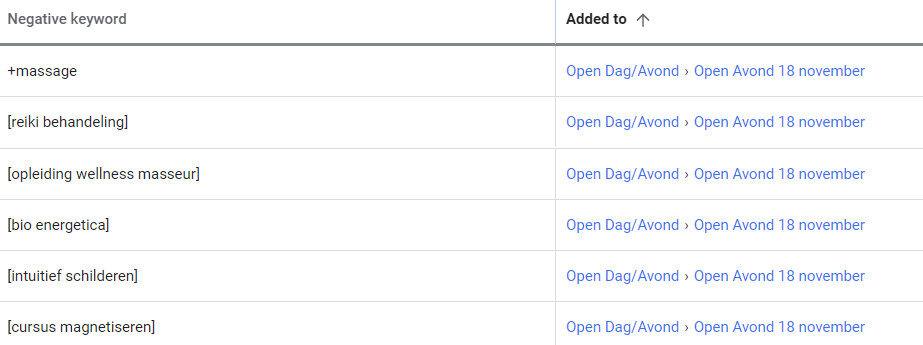
Bijschrift: Een voorbeeld van zoekwoorden die uitgesloten zijn van de campagne
An important challenge during optimization, as well as in keyword selection, is defining what is definitely related to Intuitive Training (IT) and what is not. Practices like massage, magnetism, and bioenergetics are far removed from the training and course offerings of IT.
Results of the 1st Online Marketing Campaign
With the first campaign, we achieved 236 clicks out of 3,229 impressions, resulting in a Click-Through Ratio (CTR) of 7.31% (impressions/clicks). The total cost amounted to €174.43, resulting in a Cost Per Click (CPC) of €0.74.
The first campaign directed visitors to a landing page promoting the first semester of the course. The goal of the campaign was to generate more registrations, but despite visitor interest, direct registrations did not occur. We decided to take a closer look at the customer journey and the conversion goal – what result should the campaign lead to.
Customer Journey Analysis
The educational center has been in existence for over 25 years and has a large customer base with whom it regularly communicates through newsletters and social media posts, especially leading up to new semesters and open days. In practice, however, the majority of students only registered after attending the open day. Therefore, the next campaign needed to focus on open day attendance.
Online Marketing Makes Results Visible and Predictable
Another factor was the predictability of registrations. The open day was well-promoted and often had good attendance, but the number of attendees varied, sometimes with 15 visitors, other times with 30. Sometimes visitors came with a clear purpose and registered in large numbers, while other times the outcome was less favorable. IT could only determine the success of an open day after the fact. How could we increase predictability?
Although attending the open day was free of charge, we decided to ask for registration to improve predictability. Visitors who registered in advance received something in return: a special one-on-one session.
Conclusion: The second campaign aims to increase registrations for a specific open day.
 Tweede online marketing campagne: unieke landingspagina
Tweede online marketing campagne: unieke landingspagina
To encourage people to register for a specific open day, we chose to create a landing page with this sole purpose. The structure and all the information on the page are designed to persuade people to register. The advertisements were also rewritten with this goal in mind, and more emphasis was given to keywords that were expected to perform better in this context.
Click on the image of the landing page and read our notes on the construction of the final landing page.
During the campaign, we regularly monitored the performance of both keywords and advertisements, as well as the actual conversions. It became clear after a few days that the adjusted campaign was yielding significantly better results.
We achieved more impressions and a lower CPC for a total of 191 clicks. While this is a lower number of clicks compared to the previous campaign, the most important result is not yet visible:
The campaign resulted in 7 registrations for the open day at a total advertising cost of € 105.26! That’s € 15.03 per registration (lead).
Optimizing After a Successful Online Marketing Campaign
The second campaign was a great success and left us wanting more. What can we do to achieve even better results in the third campaign?
Our analysis showed that there was room for improvement in the following areas:
1. Further CPC optimization.
2. Expanding the list of keywords.
3. Expanding the geographic area from 30 to 50 km around Zutphen.
4. Further optimization of the landing page.
5. Extending the campaign duration.
With a longer campaign duration, a larger geographic area, and the addition of various keywords, the goal was to expand the reach. Meanwhile, continuous CPC optimization for these keywords aimed to keep costs in check. This challenge is what makes SEA (Search Engine Advertising) and online marketing work in general interesting.
The results of the third online marketing campaign were: [Resultaten derde online marketing campagne – (please provide specific details about the results)]
The longer duration and broader use of keywords resulted in slightly higher costs and a slightly higher cost per conversion than the second campaign but still well within the margin.
With 11 registrations, the longer duration of the campaign proves to be a success. With a few days to go, it promises to be another highly successful open day.
Return on Investment (ROI) for the online marketing campaign
Once we were certain about the campaign direction and goals, we integrated the conversion path into Google Ads, Analytics, and Tag Manager. This allows us to track in fine detail where clicks and conversions originate and what these visitors did on the site. These data can also be combined into an interactive dashboard if desired. In any case, we quickly have access to very interesting data:
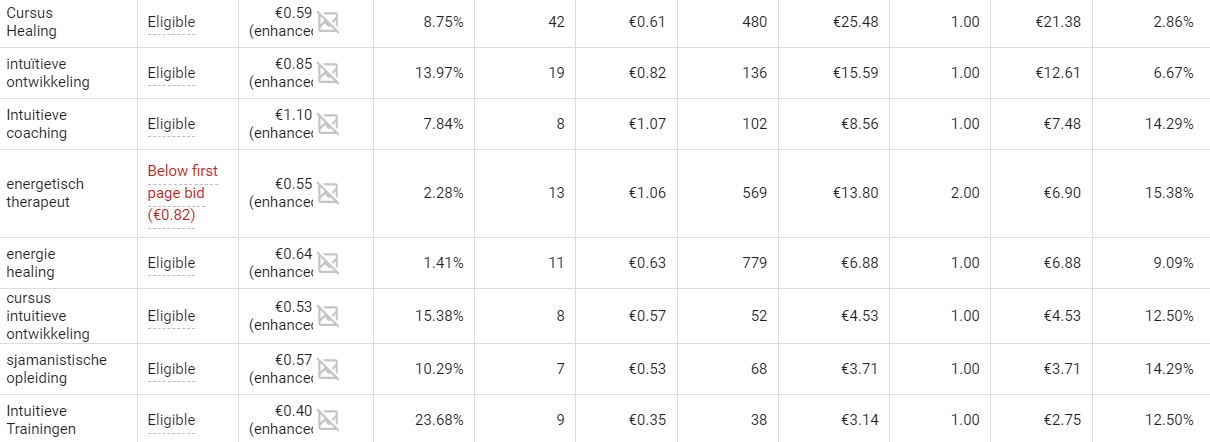
Further online marketing optimization
As of the time of writing, we still have a few days remaining in the current, third campaign, and it’s too early to start analyzing and drawing conclusions. However, some areas we’ll definitely be looking into include:
Conversion rate and cost per conversion for specific keywords on which we are currently bidding lower due to budget constraints.
Creating even more targeted ads for visitors from certain regions (with high potential) or for specific keywords.
Adjusting bidding strategies and keywords depending on the device (mobile phone, computer, or tablet).
Advice and Strategy
Furthermore, Merkelijkheid always looks beyond just online marketing and collaborates with IT on the marketing and communication strategy in the broadest sense. For example, insights from the search traffic can also provide valuable information about product offerings, pricing, and positioning for businesses.
positionering die van grote waarde kunnen zijn voor bedrijven.
As of now, the campaign has generated 800 new visitors and 20 registrations for Intuitive Training’s two open days. A good percentage of these visitors appears to be actually enrolling in a course or workshop, but this will become clearer in the coming months as more courses and workshops begin. We are currently working with an estimated conversion rate of 30%, meaning about 6 to 7 students would enroll.
Converting this into an actual value can only be done in some time, but we estimate the value of a student to be around €500, and the campaign would have generated approximately €3,500.
The advertising costs for these three campaigns amounted to €528.59:
The total investment in Merkelijkheid amounted to €1,950 over 3 months, with the majority of this budget allocated to:
1. Pre-campaign research.
2. Campaign setup and ad creation.
3. Creating the landing page and implementing the conversion path.
The budget for the above tasks was €1,250. Additionally, there were fixed costs for campaign management and optimization at €350 per month, and the total campaign duration was 2 months.
The total investment in the SEA research, campaign setup, ad creation, management, optimization, and ad spending was €2,478.59. The campaign generated €3,500, not accounting for future enrollments and the value of the 800 visitors. The Return on Investment (ROI) was at least €1,000, which translates to an ROI of 40%!
The future of this online marketing campaign looks even more promising than the already fantastic 40% ROI. Simply repeating the previous campaign will only cost a portion of the mentioned budget, covering management, optimization, and ad spending. The costs for the next campaign would amount to only €600. If this again results in 3 to 4 students, the ROI of the campaign wouldn’t be 40% but almost 300%!
Your Own Targeted Online Marketing Campaign?
By now, you likely have a good understanding of the work involved and, more importantly, the potential of a targeted online marketing campaign. You also know that this isn’t limited to larger companies with deep pockets; it’s accessible to smaller businesses as well.
We often hear statements like “my market is different,” but we’ve seen these results in the most diverse markets, from heavy industrial B2B environments and professional services to consumer products. The above case is just one of the many examples we could share with you. Please let us know what challenges you’re facing.
